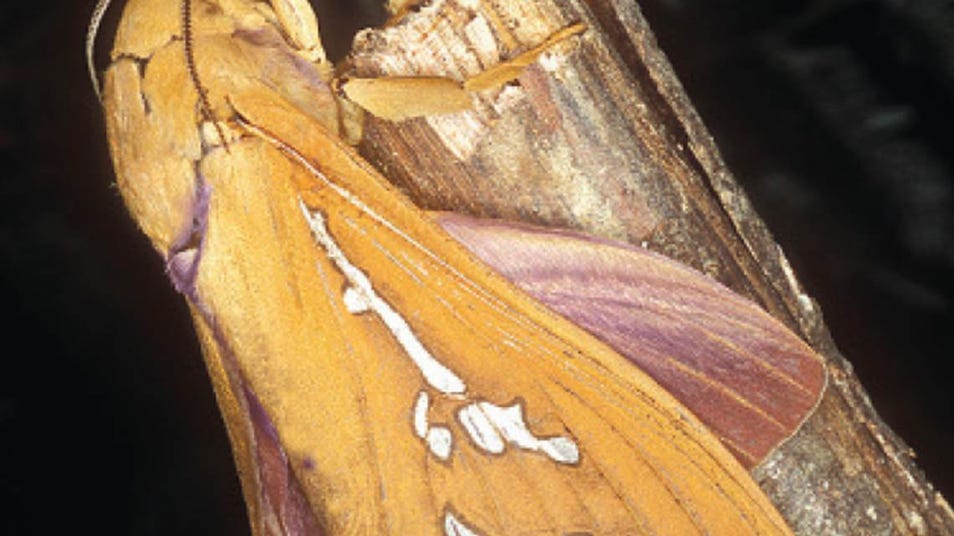MOTHS AND BUTTERFLIES

MOTHS AND BUTTERFLIES ORDER LEPIDOPTERA
The larva is a typical caterpillar, with a sclerotised head and soft thorax, usually 10 visible abdominal segments; three pairs of legs on the thorax are visible and the abdomen has short prolegs on the third to sixth, and tenth segments. The important difference between these and other caterpillar-like larvae (such as the sawfly wasps, Hymenoptera) is the presence of a ring of fine hooks (crochets) on the ends of these prolegs.
Image: Ghost moth, Abantiades hyalinatus, Hepialidae (60 mm long), top right p212
Clothes Moth (Family Tineidae)
The namesake family, Tineidae, has 440 species which include the cosmopolitan pest, the clothes moth, Tineola bisselliella. Many of the native species are also associated with animal fibre and some with stored grain and fungi. Most adults are small with wingspans rarely over 25 mm. The wings are long and narrow, often with a silvery sheen and a hair fringe along the hind margins. The head is adorned by a dense mop of hair, as in the large east coast Moerarchis australasiella. Adults have reduced mouthparts and do not feed.
Source: A field guide to insects in Australia - third edition - Paul Zborowski and Ross Storey - New Holand publishers
